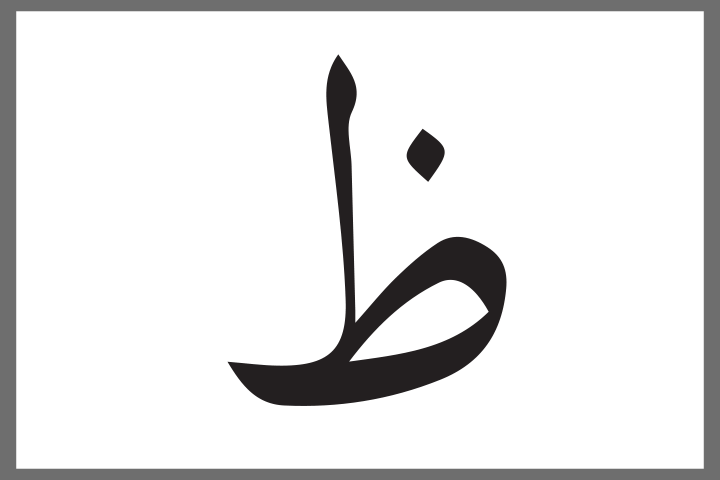Welcome to your guide to one of the most unique and distinctive letters in the Arabic alphabet: ظ (dhaad). If you’re learning Arabic, you’ll quickly notice that this letter doesn’t have a direct equivalent in English. But don’t worry, with a few tips and a little practice, you can master it.
What is the letter ظ (DHaad)?
The letter dhaad (ظ) is the 17th letter of the Arabic alphabet. While it doesn’t appear as frequently as other letters, mastering its pronunciation is crucial for speaking Arabic correctly. Its sound is what gives the Arabic language its richness, and it’s even why Arabic is sometimes called “The Language of the DHaad.”
How to Pronounce ظ (DHaad)
The pronunciation of ظ is the biggest challenge for new learners. The easiest way to think of it is as an emphatic version of the “th” sound in the English word this.
- Step 1: Get the Tongue Position Right. Place the tip of your tongue between your top and bottom front teeth, just like you would for the “th” sound in this.
- Step 2: Add the “Emphatic” Touch. This is the key difference. While making the “th” sound, push the back of your tongue up toward the roof of your mouth. This adds a deep, heavy, and full quality to the sound. The result is a sound that feels powerful and comes from the back of your throat, not just the front of your mouth.
Common Mistakes to Avoid
A frequent mistake is confusing ظ with other similar-sounding letters. Let’s break down the differences:
- ذ (Dhal): This is the light, non-emphatic “th” sound from the word this. It’s pronounced only with the tongue at the front of the mouth.
- ز (Zay): This is the simple “z” sound from the word zebra. There’s no tongue-between-teeth action here.
- ض (Daad): This is another emphatic letter, often confused with ظ. While it’s also a heavy sound, its pronunciation is different. It’s more of a heavy “D” sound, and it’s made by placing the side of your tongue against your back molars.
Writing the Letter ظ
Writing ظ is quite simple. It looks just like the letter taa (ط), but with a single dot on top. Like most Arabic letters, its shape changes depending on its position in a word.
- Isolated: ظ
- Initial: ظـ (at the beginning of a word)
- Medial: ـظـ (in the middle of a word)
- Final: ـظ (at the end of a word)
Common Words with ظ (DHaad)
Practicing these words will help you get a feel for the sound:
- Darkness – ظلام (DHalaam)
- Gazelle – ظبي (DHabe)
- To keep / guardian – حافظ (HaafiDH)
- Great / magnificent – عظيم (‘aDHeem)
- Clean – نظيف (naDHeef)
- To appear – اظهر (aDHhar)
Here are some sentences to practice:
- “The sky is dark.” (الظلام يغطي السماء.)
- “That is a great success.” (هذا نجاح عظيم.)
- “My room is clean.” (غرفتي نظيفة.)
Conclusion
In conclusion, remember that the letter ظ (dhaad) is not just an ordinary letter; it’s a gateway to a deeper, more precise understanding of the Arabic language. The pronunciation may seem difficult at first, but with consistent practice and good listening, you’ll find yourself mastering it with confidence.
To continue your enjoyable journey of learning Arabic and master the correct pronunciation of all letters and words, we invite you to download the “Kaleela” app, which offers interactive and innovative lessons. Start your path to speaking fluent Arabic now!



